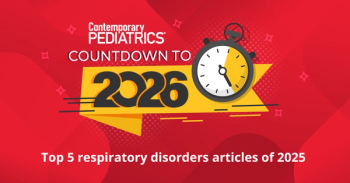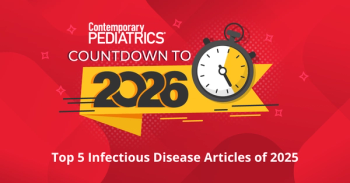
Infigratinib demonstrates positive phase 2 data in children with achondroplasia
Results demonstrated that daily oral infigratinib treatment led to increases in annualized height velocity and improvement in body proportionality.
Investigational therapy infigratinib in children with achondroplasia demonstrated positive phase 2 results in the PROPEL 2 clinical trial, according to an announcement from BridgeBio Pharma.1
Data, published today in The New England Journal of Medicine (NEJM), revealed infigratinib treatment resulted in a statistically significant and sustained increase in annualized height velocity (AHV), positive mean change in baseline in height Z-score, and improved body proportionality, while demonstrating no serious adverse events (SAE) or treatment-emergent adverse events (TEAEs) that led to discontinuation.1,2
According to the NEJM, achondroplasia is a genetic skeletal condition that results in disproportionately short stature and medical complications throughout life. In the phase 2 PROPEL 2 study (NCT04265651), the oral bioavailable FGFR1–3 selective tyrosine kinase inhibitor was evaluated for safety and efficacy in children with achondroplasia aged between 3 and 11 years. There were 72 children enrolled across 5 sequential cohorts, assigned to receive daily infigratinib at the following doses, for 6 months, followed by 12 months of extended treatment in which the dose in cohorts 1 and 2 could be escalated to the next ascending level at months 6 and 122:
- 0.016 mg per kilogram of body weight (cohort 1)
- 0.032 mg per kilogram (cohort 2)
- 0.064 mg per kilogram (cohort 3)
- 0.128 mg per kilogram (cohort 4)
- 0.25 mg per kilogram (cohort 5)
According to the study investigative team, the primary efficacy outcome was the change from baseline in the AHV, while the primary safety outcome was the incidence of AEs that led to a decrease in the dose or discontinuation of infigratinib.2
All children had at least 1 adverse event during treatment, "most of which were mild or moderate in severity; none resulted in treatment discontinuation," noted the study authors. An increase in AHV was observed in cohort 5, which continued throughout the duration of the study, demonstrating a mean change from baseline at 18 months of 2.50 cm per year (95% confidence interval [CI], 1.22 to 3.79; [P = 0.001]).2
Relative to an untreated achondroplasia population at 18 months, those treated with infigratinib in cohort 5 demonstrated a mean change from baseline in height Z-score of +0.54 (P < 0.001). In addition, a statistically significant improvement in body proportionality—the mean upper to lower body segment ration—was –0.12 (P = 0.001) at 18 months.1
Regarding the safety profile, oral infigratinib was well tolerated at month 18, with no SAEs or TEAEs that led to discontinuation, according to BridgeBio.1
"Publication of results from PROPEL 2 in the New England Journal of Medicine and Breakthrough Therapy Designation of infigratinib by the FDA underscore the significance and importance of these data and the potential of this oral therapy to not only increase height, but more importantly, enhance functionality for children with achondroplasia,” said Ravi Savarirayan, MD, PhD., of Murdoch Children’s Research Institute in Melbourne, Australia, the global lead investigator for PROPEL 2 and lead author of the NEJM publication, in a statement.1
"We are encouraged to see no safety signals and no adverse changes in bone age or bone mineral density,” added Melita Irving, MD, a a clinical geneticist at Guy’s and St Thomas’ NHS Foundation Trust, London, United Kingdom and investigator for the infigratinib clinical program at the Evelina London Children’s Hospital. "These results point to the potential of infigratinib for children living with skeletal dysplasia, and we look forward to further evaluation of infigratinib in PROPEL 3, the ongoing Phase 3 trial, as well as in the Phase 2 portion of the ACCEL program in children with hypochondroplasia," said Irving.1
The PROPEL 3 study continues to enroll on schedule according to BridgeBio, which expects enrollment completion by the end of 2024. Currently, in addition to Breakthrough Therapy Designation, infigratinib has received Orphan Drug Designation, Fast Track Designation, and Rare Pediatric Disease Designation from the FDA.1
References:
1. BridgeBio Pharma announces publication in the New England Journal of Medicine of phase 2 PROPEL 2 study of infigratinib for children living with achondroplasia. BridgeBio Pharma. Press release. November 18, 2024. Accessed November 18, 2024. https://finance.yahoo.com/news/bridgebio-pharma-announces-publication-england-103000177.html
2. Savarirayan R, De Bergua J, Arundel P, et al. Oral infigratinib therapy in children with achondroplasia. New England Journal of Medicine. Published online November 18, 2024. doi:10.1056/NEJMoa2411790
Newsletter
Access practical, evidence-based guidance to support better care for our youngest patients. Join our email list for the latest clinical updates.




